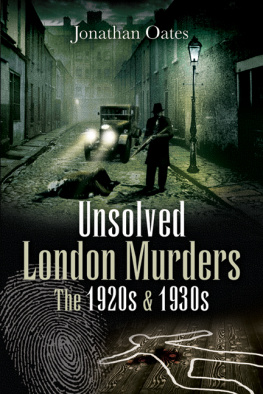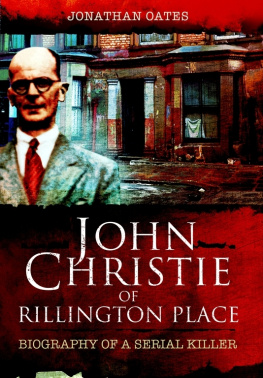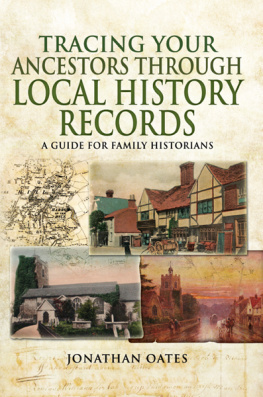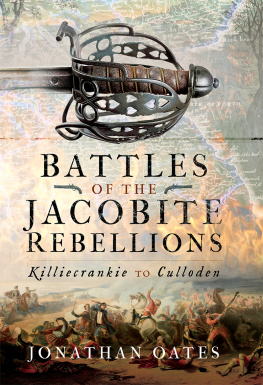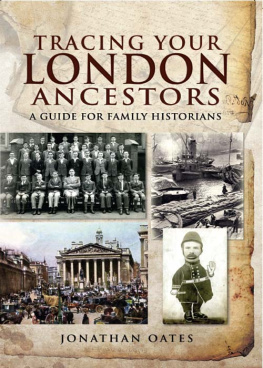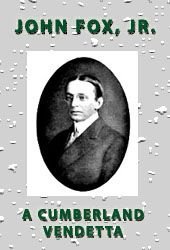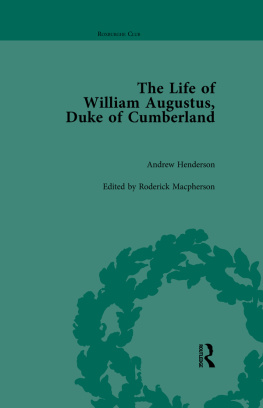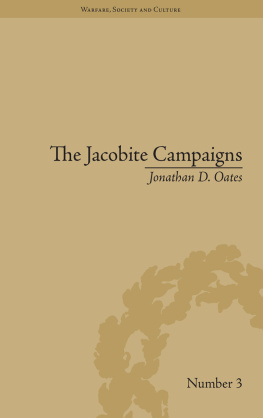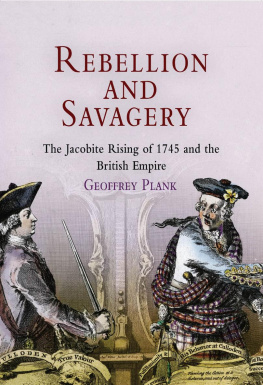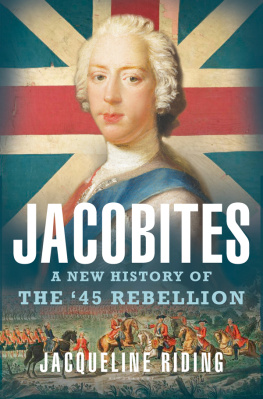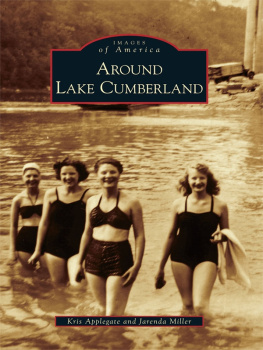
First published in Great Britain in 2008 by
Pen & Sword Military
An imprint of
Pen & Sword Books Ltd
47 Church Street
Barnsley
South Yorkshire
S70 2AS
Copyright Jonathan Oates
9781844684717
The right of Jonathan Oates to be identified as Author of this work has been asserted by him in accordance with the Copyright, Designs and Patents Act 1988.
A CIP catalogue record for this book is available from the British Library
All rights reserved. No part of this book may be reproduced or transmitted in any form or by any means, electronic or mechanical including photocopying, recording or by any information storage and retrieval system, without permission from the Publisher in writing.
Typeset in Ehrhardt by Phoenix Typesetting, Auldgirth Dumfriesshire
Printed and bound in England by Biddles Ltd., Kings Lynn
Pen & Sword Books Ltd incorporates the Imprints of Pen & Sword Aviation, Pen & Sword Maritime, Pen & Sword Military, Wharncliffe Local History, Pen & Sword Select, Pen & Sword Military Classics, Leo Cooper, Remember When, Seaforth Publishing and Frontline Publishing
For a complete list of Pen & Sword titles please contact
PEN & SWORD BOOKS LIMITED
47 Church Street, Barnsley, South Yorkshire, S70 2AS, England
E-mail: enquiries@pen-and-sword.co.uk
Website: www.pen-and-sword.co.uk
List of Plates
Battlefield of Killiecrankie (1689). (Authors collection.)
Scene of the massacre of Glencoe (1692). (Authors collection.)
Statue to Charles Edward Stuart at Glenfinnan. (Authors collection.)
Edinburgh Castle (Authors collection.)
Monument at Prestonpans, 2007. (Authors collection.)
Gravestone at Clifton, 2005. (Authors father (Mr David Oates).)
Blair Castle, c .1910. (Authors collection.)
Charles Edward Stuart, 172088. (Richard Sharps collection.)
Miss Flora MacDonald. (Richard Sharps collection.)
William Augustus, Duke of Cumberland (172165). (E. Charteris, William Augustus, Duke of Comberland , 1913.)
Thomas Pelham-Holles, Duke of Newcastle (16931768). (Authors collection.)
Regular soldier, 1745. (Authors collection.)
Jacobite re-enactors at Culloden, 2007.
Culloden Moor, looking west towards the Jacobite lines, 2007. (Author.)
The Well of the Dead, Culloden Moor, c .1900. (Authors collection.)
Cairn and graves of the clans, Culloden Moor, c .1910. (Authors collection.)
Culloden Cottage, Culloden Moor, c .1910. (Authors collection.)
House in Inverness where wounded regular soldiers were taken after Culloden, 2007. (Author.)
Church in Inverness where Jacobite prisoners were taken, 2007. (Author.)
Ruin of Glengarry castle, Loch Oich, c .1900. (Authors collection.)
Troops searching the area.
Isles of Rhum and Eigg, c .1910. (Authors collection.)
Isle of Skye, c .1910. (Authors collection.)
Fort George, 2007. (Author.)
Acknowledgements
First of all my thanks go to her gracious majesty, Queen Elizabeth II, for permission to cite from the Royal Archives. To all those archivists and librarians in England and Scotland for having brought out copious amounts of archives and books, thank you. The eminent historians Professor Speck, Professor Taylor and Stuart Reid were all kind enough to read through my first draft and made comments accordingly. Any mistakes of fact, are of course, mine, and the opinions expressed herein are not necessarily theirs. I would also like to thank Richard Sharp for allowing me to use a number of images which appear here. My long-suffering and ever patient wife has not only endured my absences in research and writing, but has also accompanied me in several research visits.
I dedicate this book to Professor Stephen Taylor, for all his help and encouragement in my eighteenth-century studies since my undergraduate days.
Introduction
The actions of the great are viewed through so false a medium, that
they seldom receive their just proportion either of applause or censure,
till a long accession of events has removed the influence of prejudice.
A heavy train of fawning flatterers, or envious rivals, like the different
extremes of a telescope, always exhibits them either dwarfs or giants ...
In what light posterity will view the actions of the late duke of
Cumberland, requires no depth of penetration to ascertain; his services
are too strongly felt by Englishmen, for the remembrance of them
to die away in their minds.
Most of those who have heard of the Duke of Cumberland automatically think of him as The Butcher, even though they will often not be able to say much more than this. This appellation is on account of cruelties allegedly committed to wounded and fleeing Jacobites immediately after the battle of Culloden and the repression in the Highlands of Scotland which followed.
Cumberlands epithet does not dispose anyone to adopt a kindly attitude towards him. Anything but. Yet other well-known eighteenth-century figures, Frederick II of Prussia (17121786) and Catherine II of Russia (17301796), better known as Frederick the Great and Catherine the Great, immediately shine through their epithets, though both pursued militarily aggressive policies abroad and essentially illiberal and repressive ones at home. Cumberlands epithet is therefore unfortunate and perhaps unfair.
My immediate interest in writing specifically about him stems from a rereading, in 2002, of the novel by Josephine Tey, Daughter of Time , in which the twentieth-century hero investigates the alleged crimes of one of historys greatest villains; Richard III, in order to ensure he receives a fairer judgement. One character in this book makes the following observation:
Its an odd thing but when you tell someone the true facts of a mythical tale they are indignant not with the teller, but with you. They dont want to have their ideas upset. It rouses some vague uneasiness in them, I think, and they resent it. So they reject it and refuse to think about it. If they were merely indifferent it would be natural and understandable. But it is much stronger than that, much more positive. They are very annoyed.
Thus inspired, I began to write an article on the subject, but failed to complete it. Then the idea was revived four years later, and this book is the result.
The phrase History is written by the victors is one which is trotted out at regular intervals. It could not be less true as regards the Forty Five. Bonnie Prince Charlie and his Highland supporters are certainly associated in the common mind as heroic and romantic, whereas Cumberland and the victorious regular troops are identified as the enemy. The losers seem to have won the battle for a favourable posthumous judgement. Certainly anyone visiting the battlefield of Culloden would come away with that impression and the annual commemoration there, with flowers and flags put next to the clan graves add to that impression.
That said, there are a number of works which do not present such a view. These include the near-contemporary histories, which present a favourable image of the defenders of the status quo and denigrate the Jacobites. More recently, historians such as Professor Speck, the late General Whitworth and Stuart Reid have presented the Duke and his forces in a more sympathetic light. Of course, from the nineteenth century onwards, books have been published to give another viewpoint, such as those written by Frank McLynn, Jeremy Black and John Prebble in the second half of the twentieth century, to name but three. As far as fiction, TV and film goes, the Jacobites win hands down. Even passing references to Cumberland saddle him with the epithet Butcher; one example being Evelyn Waughs Vile Bodies , where Mr Isaacs, proprietor of a film studio, refers to Part of Butcher Cumberlands army. At the Jacobite Studies Trust conference in July 2007, a casual reference was made by one speaker, without any need for further comment, to Cumberlands genocide in Scotland.


